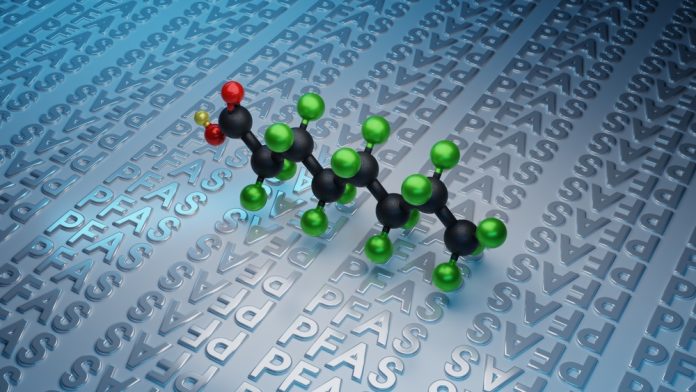PFAS chemicals, or per- and polyfluoroalkyl substances, are widely used in products ranging from firefighting foam and non-stick cookware to water-repellent textiles and pesticides.
These human-made compounds are notorious for their persistence in the environment, earning the nickname ‘forever chemicals’ because they don’t naturally break down.
As a result, PFAS chemicals have become a global pollutant, contaminating soil, water, and even the bodies of humans and animals. The health risks associated with PFAS are severe, including liver damage, hormonal imbalances, and cancer.
To combat this issue, researchers at ETH Zurich have developed a new method for degrading a particularly harmful subgroup of PFAS known as perfluorooctane sulfonates (PFOS).
This innovative approach could pave the way for safer, more effective ways to tackle PFAS pollution.
The challenge of breaking down PFOS
PFOS, one of the most toxic types of PFAS, has already been restricted or banned in many parts of the world.
However, its chemical structure, consisting of long carbon chains surrounded by fluorine atoms, makes it incredibly resistant to decomposition.
“The main problem is that the molecules consist of long carbon chains surrounded by fluorine atoms. This carbon-fluorine bond is so strong that you need a lot of energy to break it,” explains Andrea Veciana, a doctoral student at ETH Zurich’s Institute of Robotics and Intelligent Systems.
Current methods of PFAS removal, such as thermal decomposition and photocatalysis, come with significant drawbacks.
Thermal decomposition demands temperatures over 1,000 degrees Celsius, making it highly energy-intensive.
Photocatalysis, while effective, struggles to penetrate the cloudy wastewater where PFAS often accumulates.
In addition, absorption methods, which use sponges to soak up pollutants, merely shift the contamination problem elsewhere.
Piezocatalysis: A new way to degrade PFOS
ETH Zurich’s researchers have developed a novel method to break down PFOS using piezocatalysis.
The process involves using nanomaterials that are piezoelectric, meaning they generate an electrical charge when mechanically deformed.
By creating this electrical charge, the nanoparticles initiate a chain reaction that degrades the PFOS molecules.
Working with analytical specialists, the team demonstrated that their method was able to break down 90.5% of PFOS in a controlled laboratory setting.
However, the researchers note that they were working with a higher concentration of PFOS than is typically found in the environment.
Advantages over existing methods
This new piezocatalysis method has several advantages over traditional techniques. One significant benefit is that it can utilise different sources of mechanical energy, making it more versatile.
For example, the turbulence in wastewater treatment plants could be harnessed to activate the piezoelectric nanoparticles and degrade PFAS chemicals.
Compared to the energy-intensive thermal decomposition and the limited light penetration of photocatalysis, piezocatalysis offers a more practical and energy-efficient alternative.
Additionally, unlike absorption methods, piezocatalysis doesn’t just transfer the problem from water to another medium but directly breaks down the toxic chemicals.
A step forward in the fight against PFAS
While the laboratory results are promising, scaling up this technology to treat large volumes of water remains a significant challenge.
Nevertheless, the researchers are optimistic about the potential for piezocatalysis to be applied in various settings, from industrial wastewater treatment plants to agricultural water systems.
Furthermore, the ETH Zurich team believes their method could be adapted to degrade other types of PFAS and micropollutants, broadening its potential impact.
However, as Veciana points out, technological advancements alone won’t solve the PFAS problem: “PFAS is a global problem that should be tackled first and foremost through policy change and more transparency.”
The development of piezocatalysis marks an exciting step forward in the fight against PFAS chemicals.
While there is still work to be done to bring this technology to industrial and environmental applications, the method offers a more efficient and potentially scalable solution to a pressing global issue.





